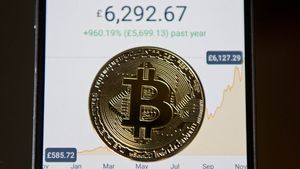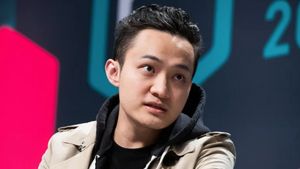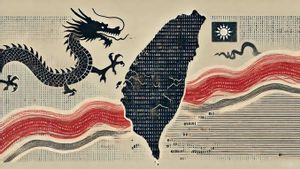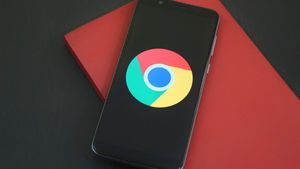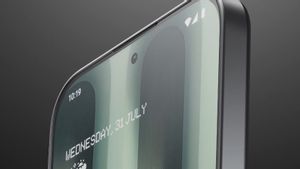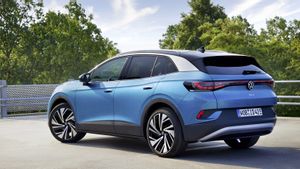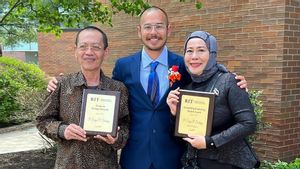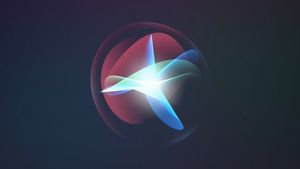JAKARTA - Microsoft is considering the use of next-generation nuclear reactors to supply energy to this company's artificial intelligence (AI) data center and ambitions. This is in line with job vacancies for a major program manager who will lead the company's nuclear energy strategy.
The data center has consumed a large amount of electricity, which can hamper the company's targets in terms of climate unless it can find clean energy sources. The presence of AI consuming a lot of energy makes Microsoft's challenges even greater. Artificial intelligence dominated Microsoft's Surface event last week.
Nuclear energy does not produce greenhouse gas emissions. However, this could also open up new problems related to the handling of radioactive waste and the construction of uranium supply chains. The role that nuclear energy should play in overcoming climate change is still a heated debate, but Microsoft founder Bill Gates has long been a fan of this technology.
Based on these new job vacancies, it appears that Microsoft hopes for advanced nuclear reactors as a solution. The job post states that they are looking for someone who can "direct project initiatives for all aspects of nuclear energy infrastructure for global growth."
Microsoft is specifically looking for someone who can design plans for a small modular reactor (SMR). All the highlights about nuclear today are on this next-generation reactor.
Unlike its larger predecessor, this modular reactor should be easier and cheaper to build. In comparison, the last major nuclear reactor built in the US has finally started operating this summer, costing around $17 billion (Rp261 trillion) more than the initial budget and after seven years of delay.
In January, the US Nuclear Regulatory Commission just provided certification for the SMR design for the first time, allowing electric companies to choose the design when applying for a permit for the construction of a new power plant. This can open a new chapter for nuclear energy.
However, there are still some obstacles that must be overcome if Microsoft wants to rely on SMR to supply data center energy where clouds and AI are located. SMR requires more enriched uranium fuel, called HALEU, compared to current conventional reactors.
So far, Russia has been the main supplier of HALEU in the world. There is a push in the US to build a domestic uranium supply chain, which is currently inciting resistance from communities around uranium mines and processing plants.
In addition, there are still questions about what to do with nuclear waste, which even a group of SMRs can generate significant amounts, and the US is still looking for ways to long-term storage.
Microsoft did not answer questions from The Verge about its plans for next-generation nuclear or how to overcome the challenges it might come with. Bill Gates also happened to be the founder and chairman of TerraPower, an incubator developing the SMR design.
The company "currently has no agreement to sell reactors to Microsoft," it said in a CNBC report. Microsoft already has an agreement to purchase clean energy credit from Canadian utility firm Ontario Power Generation, which is in the process of becoming the first utility to implement SMR in North America, as reported by Axios.
Microsoft has also made a bold deal to buy electricity from a company called Helian which is developing a more futuristic fusion power plant. Both traditional nuclear reactors and SMR designs generate electricity through nuclear fission, namely atomic division.
SEE ALSO:
Nuclear fusion, involving the incorporation of atoms, as it does in stars, is to create their own energy. The fusion reactor is something heavily coveted - it will become an abundant source of clean energy and does not produce radioactive waste such as nuclear fission.
However, despite decades of research and recent progress, most experts say that fusion power plants are still decades away from being realized. But the world cannot wait so long to tackle climate change.
Helon supporters also include OpenAI CEO and ChatGPT developer Sam Altman. Microsoft extended its multi-year investment of billions of dollars with OpenAI this year.
Last week, the company announced its plans to add OpenAI's DALL-E 3 image generator to Bing Chat. "We are committed to helping our customers use our platform and tools to do more with less today and innovate for the future in the new era of AI," Satya Nadella, Chair and CEO of Microsoft, said in job vacancies for the main program manager of nuclear technology. Thus adapted from The Verge.
The English, Chinese, Japanese, Arabic, and French versions are automatically generated by the AI. So there may still be inaccuracies in translating, please always see Indonesian as our main language. (system supported by DigitalSiber.id)



